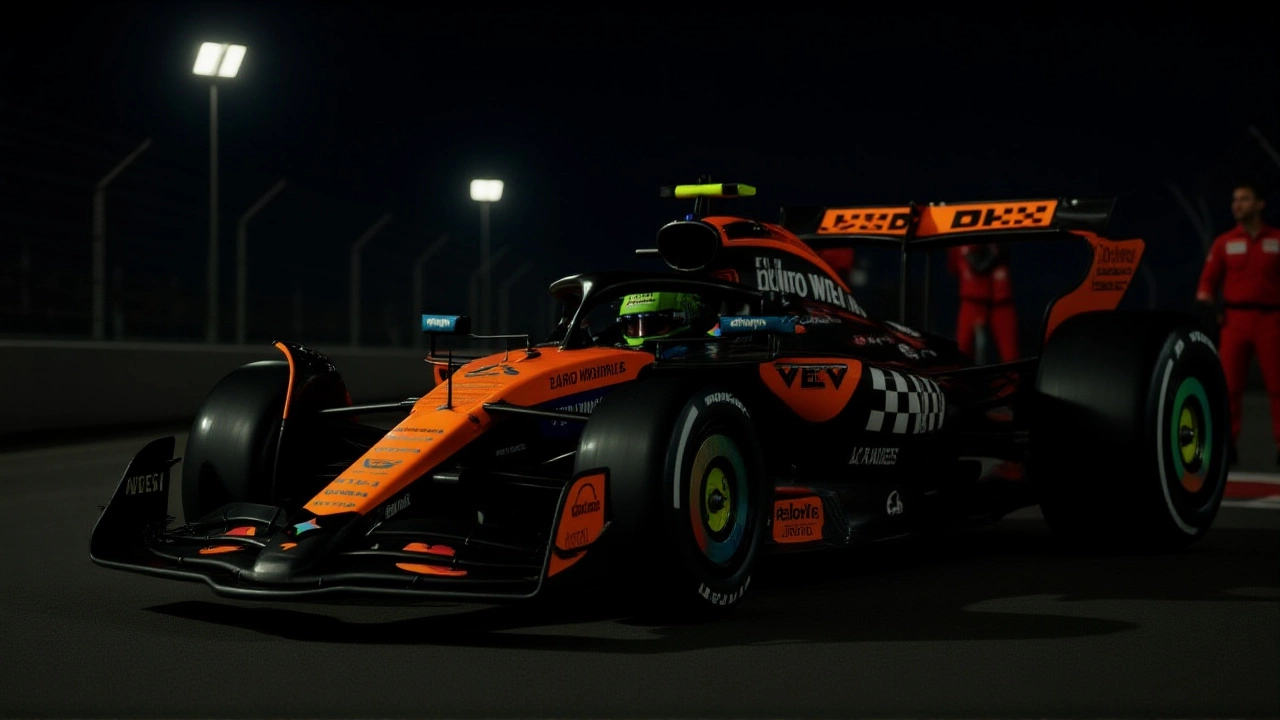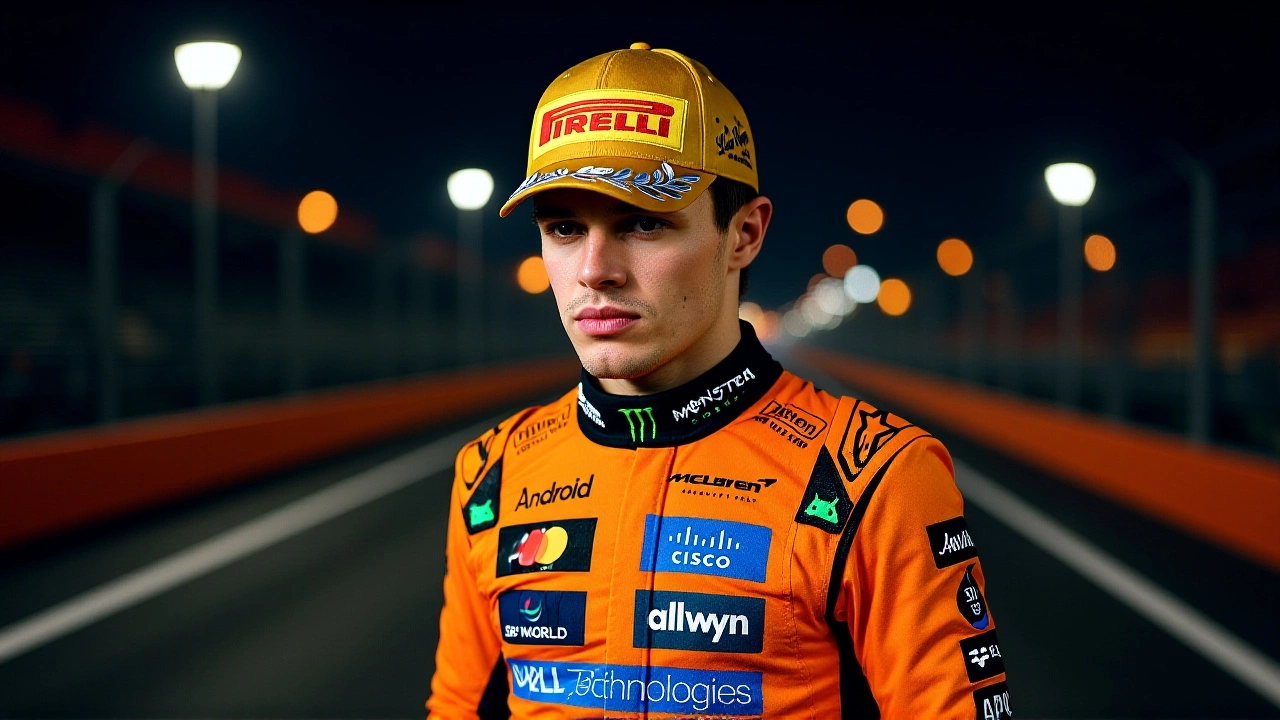When the checkered flag fell on the 2025 Las Vegas Grand Prix Las Vegas Strip Circuit just after 1:30 a.m. local time on Sunday, Lando Norris driver for the McLaren F1 Team and Oscar Piastri driver for the McLaren F1 Team thought they’d secured a dominant 1-4 finish. Instead, they walked away with nothing. Hours later, the Fédération Internationale de l'Automobile (FIA) announced both cars had violated Article 3.5.9 — the rule governing the minimum 9mm thickness of the skid block, or plank, beneath the chassis. The violation? A straightforward 8.7mm reading on Norris’s MCL39, 8.8mm on Piastri’s. No ambiguity. No appeal. Just silence in the McLaren garage.
The Skid Block That Changed Everything
Formula One cars run dangerously close to the ground — sometimes less than 5mm — to generate downforce. The wooden plank, mounted under the car, is a simple but brilliant enforcement tool. As the car wears it down, officials measure its thickness after the race. If it’s below 9mm, it means the car was running too low, gaining illegal aerodynamic advantage. It’s not a new rule. It’s been around since the 1990s. But it’s rarely enforced with this kind of finality — especially not on both cars from the same team.McLaren’s defense was earnest. Team Principal Andrea Stella argued the team faced extreme bouncing — or “porpoising” — on the bumpy Las Vegas Strip, exacerbated by limited track time due to weather delays. They’d only completed one full practice session. They suggested possible damage from a minor curb strike in qualifying. But the stewards didn’t buy it. “These are not mitigating circumstances,” read their official statement. “The regulation exists to ensure fairness. It is not a suggestion.”
Championship Chaos Unleashed
Before the race, Norris led the Drivers’ Championship with 420 points, Piastri sat at 390 — a 30-point cushion. Verstappen, the race winner, was 42 points behind Norris. After the disqualifications? Norris drops to 390. Piastri jumps to 366. Verstappen, now tied with Piastri, sits at 366 as well. The gap between first and second? Just 24 points. With 58 points still up for grabs across the final two races — Lusail International Circuit Doha, Qatar and the season finale — the title is now a three-way free-for-all.It’s the first time in McLaren’s 58-year F1 history that both cars have been disqualified from the same race for the same technical breach. And it’s the second time this season a driver has lost a result for the same plank violation. Back in April, Lewis Hamilton was stripped of his podium finish at the Chinese Grand Prix Shanghai after his Ferrari’s plank was found at 8.6mm. Now, the same rule has struck again — and harder.

Who Benefits? Who Bleeds?
For Oracle Red Bull Racing , it’s a gift wrapped in red tape. Verstappen, who led the race from pole and never looked threatened, suddenly finds himself in the title hunt. His team, based in Milton Keynes, England , had been playing catch-up all season. Now? He’s just 24 points behind Norris. And with McLaren’s morale shattered, Red Bull’s momentum is undeniable.For Piastri? It’s a lifeline. The 24-year-old Australian had been overshadowed by Norris all year — and for good reason. Norris had won five races. Piastri had two. But now, with the points gap halved, the pressure shifts. Piastri’s team radio after the race? “We’ve got a shot.”
For Norris? It’s a gut punch. He’d been on the verge of clinching his first world title. He’d even admitted post-race he’d been “marginal on fuel” in the final laps, lifting and coasting to conserve. But that wasn’t the issue. The issue was a millimeter too thin. And in F1, millimeters matter more than horsepower.
What’s Next? The Final Two Races
The Lusail International Circuit Doha, Qatar is next — a high-speed, high-downforce track that rewards precision. Then, the season ends at an undisclosed location — rumored to be either Abu Dhabi or a surprise return to Mexico City. Either way, the title will likely be decided by who can avoid mistakes. And now, McLaren can’t afford even one.McLaren’s CEO, Michael Andretti , has remained publicly silent. But insiders say the team is reviewing its entire aerodynamic setup process. The plank violation didn’t happen by accident. It was the result of pushing the car to its absolute limit — and crossing the line.

Why This Matters Beyond the Points
This isn’t just about who wins the championship. It’s about the integrity of the sport. F1 has spent years cracking down on “aero cheating” — from flexing wings to illegal floor designs. The plank rule is one of the few truly objective measures left. When the FIA enforces it this strictly, it sends a message: No exceptions. No excuses. Even if it costs you the title.McLaren, once the most dominant team in F1 history, now finds itself at a crossroads. Can they recover? Can Norris still win the title? Can Piastri finally step out of his shadow? And will Verstappen, already a four-time champion, add a fifth under these chaotic circumstances?
One thing’s certain: the final two races won’t just be about speed. They’ll be about nerve.
Frequently Asked Questions
How did the skid block violation happen, and why is it such a big deal?
The skid block, or plank, is a wooden strip under the car that must remain at least 9mm thick after a race. If it’s worn below that, it proves the car ran too low, gaining illegal downforce. Norris and Piastri’s cars measured 8.7mm and 8.8mm — just fractions of a millimeter under. In F1, that’s enough to gain a half-second per lap. The FIA treats this as a clear safety and fairness violation, not a technicality.
Why didn’t McLaren’s explanation about porpoising and weather work?
The stewards acknowledged the extreme bouncing on the Las Vegas street circuit, but ruled that all teams faced the same conditions. The regulation doesn’t allow exceptions for track conditions or limited testing. Teams are expected to design cars that can survive the entire race within the rules — no matter the challenges. McLaren’s setup choices, not the track, were deemed responsible.
Who are the new championship contenders after the disqualification?
With Norris at 390, Verstappen and Piastri both at 366, the title fight is now a three-way battle. Only 58 points remain across the final two races. Norris still leads, but Verstappen’s momentum and Red Bull’s reliability give him a strong edge. Piastri, now within striking distance, becomes a genuine wildcard — especially if he can outscore Norris in the final two events.
Has this happened before in F1 history?
Yes — but never to both cars from the same team in one race. Lewis Hamilton was disqualified from the 2025 Chinese Grand Prix for the same violation. In 2007, Ferrari had both cars disqualified at the Belgian Grand Prix, but for different reasons. McLaren’s case is unprecedented in its symmetry: two drivers, one team, one rule, one devastating consequence.
What’s the impact on McLaren’s Constructors’ Championship hopes?
McLaren lost 33 points — 18 for Norris’s P2 and 15 for Piastri’s P4. That drops them from a commanding lead to just 12 points ahead of Red Bull in the Constructors’ standings. With only 58 points left, Red Bull can overtake them with a 1-2 finish in either of the last two races. McLaren’s title hopes are now almost entirely dependent on Norris winning both remaining races — and even then, they’d need Verstappen to finish no better than fourth.
Will the FIA change the plank rule after this controversy?
Unlikely. The plank rule is intentionally simple and objective. Changing it would invite more loopholes. Instead, the FIA is expected to increase random plank inspections during practice sessions, not just after races. Teams may also be forced to submit real-time plank thickness data during races — a move that would make cheating nearly impossible.
